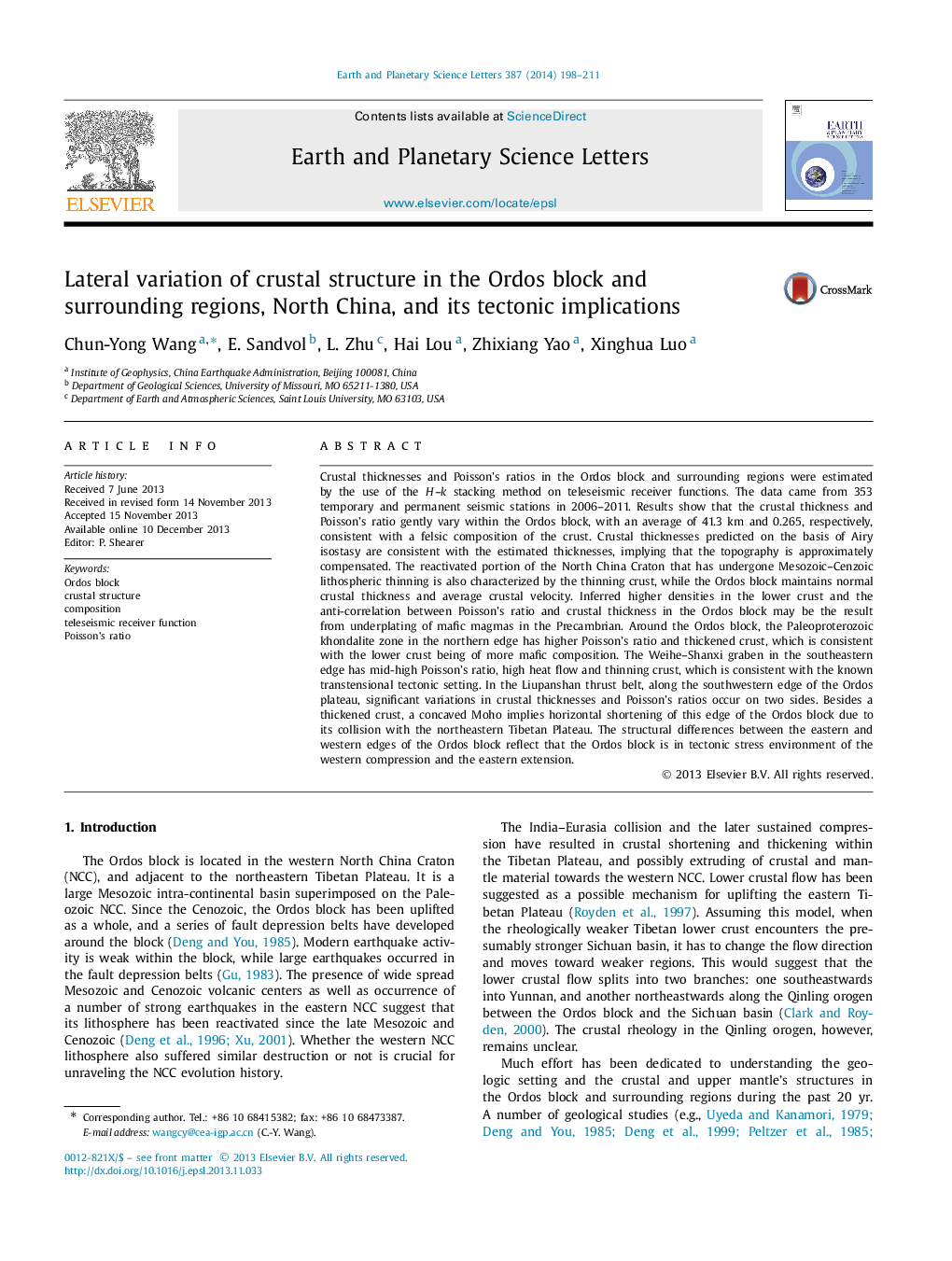| کد مقاله | کد نشریه | سال انتشار | مقاله انگلیسی | نسخه تمام متن |
|---|---|---|---|---|
| 6429663 | 1634769 | 2014 | 14 صفحه PDF | دانلود رایگان |

- Crustal thickening may come from underplating of mafic magmas in the Precambrian.
- Crustal structure in Weihe graben agrees with the transtensional tectonic setting.
- Thickened crust in Paleoproterozoic collision belt in the northern edge remains.
- The lithosphere within the Ordos block does not suffer severe destruction.
Crustal thicknesses and Poissonʼs ratios in the Ordos block and surrounding regions were estimated by the use of the H-k stacking method on teleseismic receiver functions. The data came from 353 temporary and permanent seismic stations in 2006-2011. Results show that the crustal thickness and Poissonʼs ratio gently vary within the Ordos block, with an average of 41.3 km and 0.265, respectively, consistent with a felsic composition of the crust. Crustal thicknesses predicted on the basis of Airy isostasy are consistent with the estimated thicknesses, implying that the topography is approximately compensated. The reactivated portion of the North China Craton that has undergone Mesozoic-Cenzoic lithospheric thinning is also characterized by the thinning crust, while the Ordos block maintains normal crustal thickness and average crustal velocity. Inferred higher densities in the lower crust and the anti-correlation between Poissonʼs ratio and crustal thickness in the Ordos block may be the result from underplating of mafic magmas in the Precambrian. Around the Ordos block, the Paleoproterozoic khondalite zone in the northern edge has higher Poissonʼs ratio and thickened crust, which is consistent with the lower crust being of more mafic composition. The Weihe-Shanxi graben in the southeastern edge has mid-high Poissonʼs ratio, high heat flow and thinning crust, which is consistent with the known transtensional tectonic setting. In the Liupanshan thrust belt, along the southwestern edge of the Ordos plateau, significant variations in crustal thicknesses and Poissonʼs ratios occur on two sides. Besides a thickened crust, a concaved Moho implies horizontal shortening of this edge of the Ordos block due to its collision with the northeastern Tibetan Plateau. The structural differences between the eastern and western edges of the Ordos block reflect that the Ordos block is in tectonic stress environment of the western compression and the eastern extension.
(a) Variation of crustal thickness in the study area estimated from the H-k stacking analysis. A, Ordos block; B, North China plain; C, Qinling orogen and Songpan-Garze terrane; D, Qilian fold system; E, Yinshan-Yanshan orogen; F, Alxa block. (b) Variation of Vp/Vs ratio (and Poissonʼs ratio) in the study area estimated from the H-k stacking analysis.186
Journal: Earth and Planetary Science Letters - Volume 387, 1 February 2014, Pages 198-211